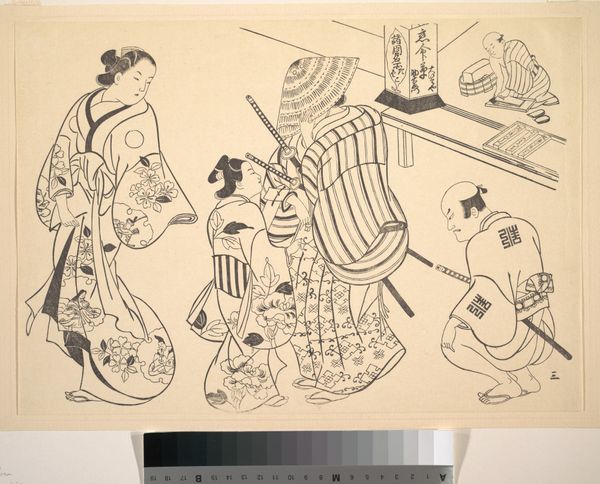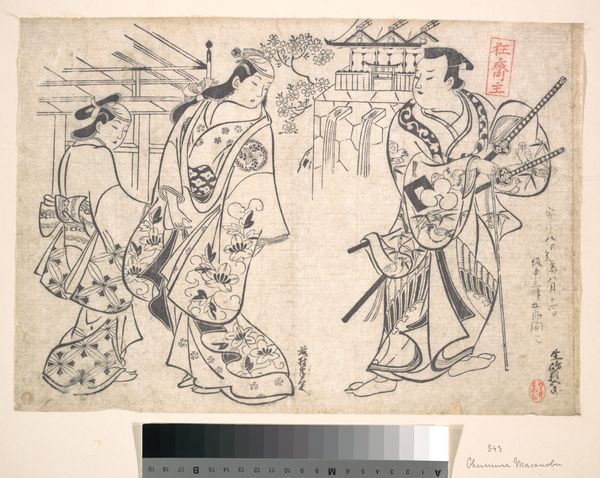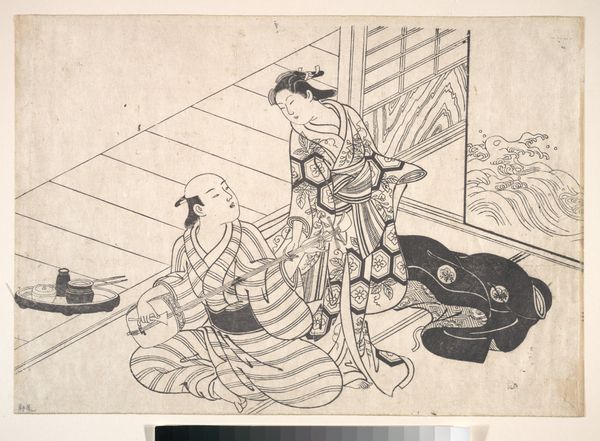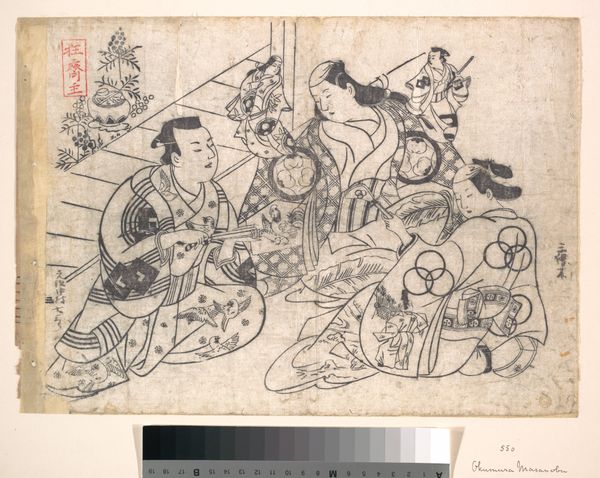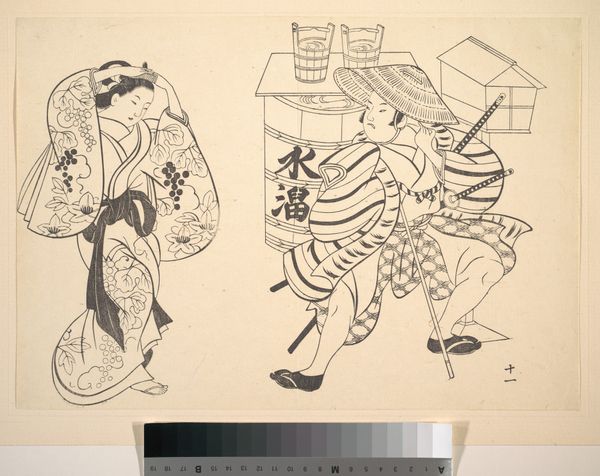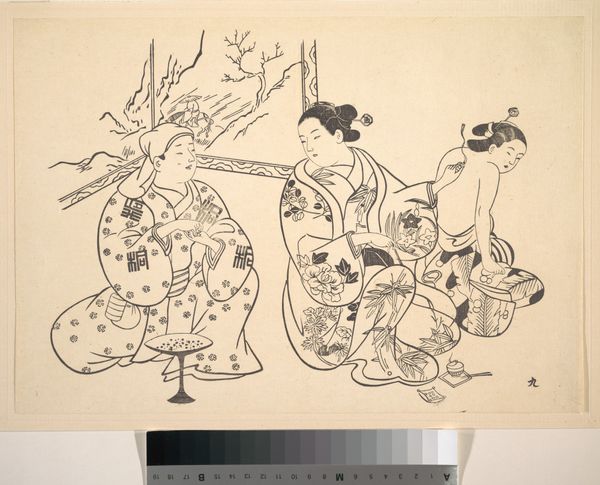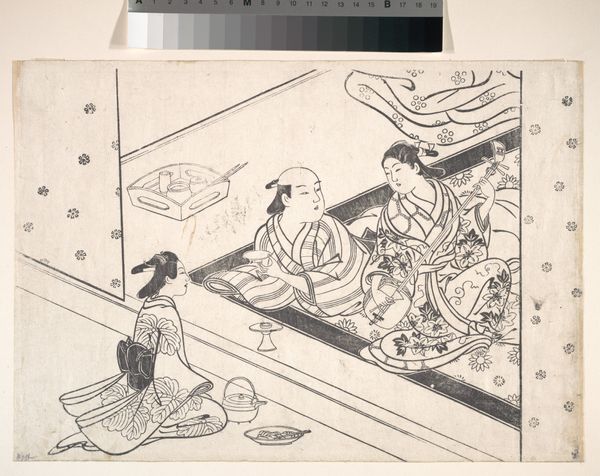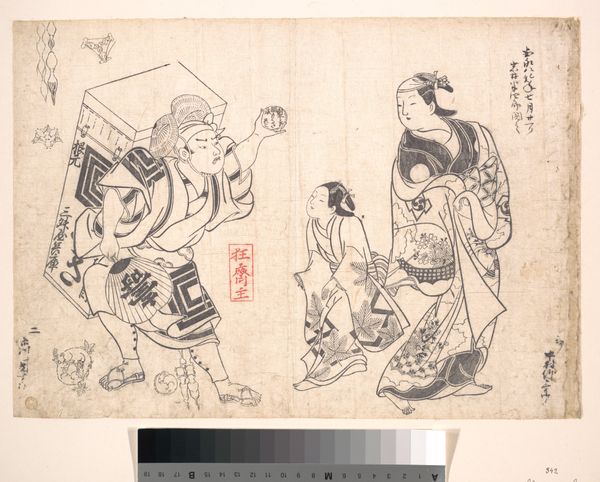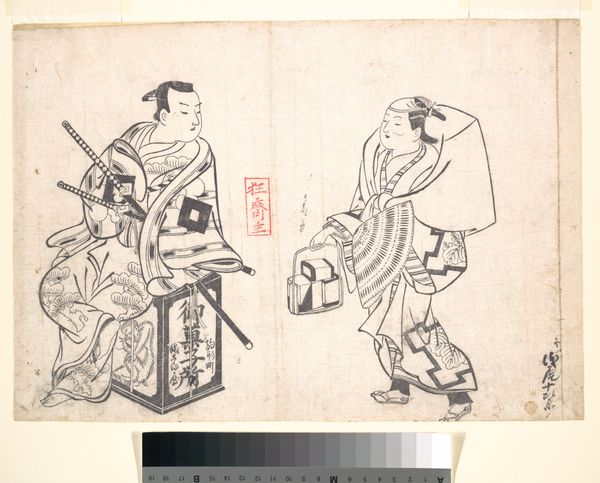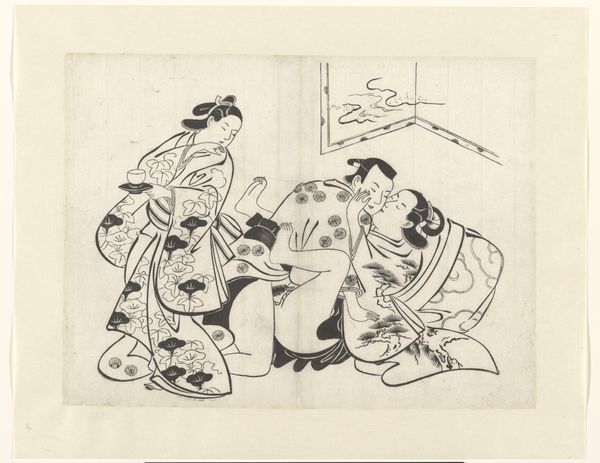
A Man Attended by a Servant Carrying a Lantern 1868 - 1912
0:00
0:00
Dimensions: 10 1/4 x 14 11/16 in. (26 x 37.3 cm)
Copyright: Public Domain
Okumura Masanobu created this ukiyo-e woodblock print, "A Man Attended by a Servant Carrying a Lantern," in 18th century Japan. The print offers a glimpse into the social hierarchy of Edo period Japan. Note the figures depicted: a well-dressed man accompanied by servants. The lantern-bearer not only provides light, but also signifies the status of the man. Masanobu worked in a cultural environment shaped by strict class divisions, where one's position dictated many aspects of daily life. The art of ukiyo-e, meaning "pictures of the floating world," often depicted the lives of those within the pleasure districts, such as actors and courtesans, but this piece speaks to the lives of those who patronized that world. To understand this work more fully, we can research the sumptuary laws of the Edo period that governed clothing and personal displays of wealth. Examination of merchant class patronage of the arts and the relationship between class and cultural production would further enrich our understanding. The meaning of art, as we can see, is fundamentally shaped by its social and institutional context.
Comments
No comments
Be the first to comment and join the conversation on the ultimate creative platform.

